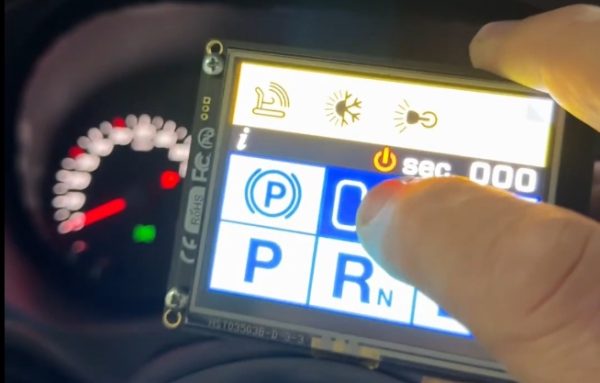
汽车行业始终处于技术创新的前沿,不断致力于提升车辆性能、安全性和用户体验。其中,串口屏作为关键技术之一,已成为现代车辆中不可或缺的组件,用于显示关键信息、车载娱乐功能及驾驶辅助系统。本文将探讨串口屏在汽车应用中的重要性,并重点介绍其在汽车领域中的其他有效应用。
提升驾驶仪表盘体验的串口屏
串口屏通过提供可定制的高分辨率显示屏,彻底改变了传统模拟仪表盘,能够实时显示车速、油量、导航指示及安全警报等关键信息。这些数字仪表盘具备更佳的可视性、清晰度和灵活性,使驾驶员能够个性化设置显示偏好并更高效地获取实时数据。借助串口屏,汽车制造商可打造沉浸式驾驶舱体验,提升驾驶员的道路专注度和环境感知能力。
支持先进车载娱乐系统
车载娱乐系统通过集成串口屏实现了显著升级,提供多媒体功能、连接选项及直观界面,满足娱乐与通信需求。串口屏作为信息娱乐系统的核心,提供触摸屏,用于控制音频设置、导航功能、智能手机集成及车辆设置。通过将串口屏融入信息娱乐系统,汽车制造商可为现代驾驶员和乘客提供无缝且互动的多媒体体验,满足其多样化需求。
提升后排娱乐与连接性
车辆后排座椅上的串口屏越来越受欢迎,为乘客提供娱乐选项、连接功能和个性化设置。配备串口屏的后排娱乐系统使乘客能够享受电影、游戏和音乐,并访问导航信息和车辆状态更新。此外,这些屏幕支持无线连接、耳机输出和独立控制选项,提升后排乘客在长途旅行中的整体舒适度和娱乐体验。
赋能驾驶辅助系统
串口屏在支持高级驾驶辅助系统(ADAS)中发挥关键作用,通过显示传感器、摄像头和雷达系统采集的实时数据,协助实现碰撞避免、车道保持、停车辅助及自适应巡航控制。这些屏幕为驾驶员提供视觉反馈、警报和警告,帮助其随时掌握周围环境及道路潜在危险。通过将串口屏集成到ADAS功能中,车辆可在各种驾驶场景下提升安全性、增强驾驶员信心并降低事故风险。
探索其他适用于汽车应用的有效串口屏
除上述应用外,串口屏在汽车领域还拥有广泛应用,包括:
- 抬头显示器(HUD):集成于HUD系统的串口屏将关键驾驶信息投射至挡风玻璃,使驾驶员无需转移视线即可获取重要数据。多信息显示屏(MID):MID单元中的串口屏通过集中式界面为驾驶员提供车辆状态、行程数据、设置调整及多媒体控制功能。摄像头监控系统:摄像头监控系统中使用的串口屏取代传统侧后视镜,采用数字显示屏,提升能见度、减少盲区并增强驾驶安全功能。
结论
综上所述,串口屏已成为汽车应用中不可或缺的组件,革新了车辆内饰、驾驶体验及安全功能。通过利用串口屏在仪表盘、信息娱乐系统、后排娱乐系统及ADAS功能中的能力,汽车制造商可提升整体驾驶体验、优化连接选项并优先保障行车安全。随着汽车技术持续演进,串口屏将在塑造互联、智能且以用户为中心的未来车辆中发挥关键作用,满足驾驶员与乘客不断变化的需求。